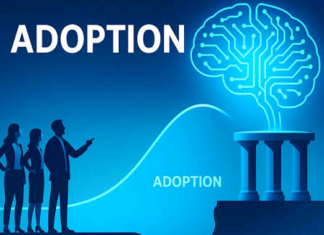When you purchase through links on our site, we may earn an affiliate commission. This doesn’t affect our editorial independence.
Developing conversion-focused product details represents a critical element for e-commerce success. Yet manually writing these descriptions often diverts attention from equally important business operations. This article will explain how to write product descriptions with AI.
Strategic AI utilization combined with thoughtful preparation creates compelling product narratives while preserving valuable time. These description generation tools support various offerings including physical merchandise, digital courses, premium content, and virtually any marketable online asset. Customer communication similarly benefits from these technologies. You can also communicate with your customers using AI.
Why use AI to create product descriptions?
Properly structured prompts consistently produce distinctive, high-quality descriptions offering several key benefits:
Overcoming creative barriers: Initial writing challenges often disappear when working from AI-generated foundations rather than blank screens.
Stylistic uniformity: Once effective prompt patterns emerge, they reliably produce content maintaining consistent tone, formatting, and length across product lines.
Productivity enhancement: Starting with computer-generated drafts accelerates completion timelines, allowing resource reallocation toward strategic priorities.
Accelerated performance testing: Quickly generate alternative description versions with varying tonal qualities or structural approaches to identify highest-converting formats.
Search visibility improvement: Incorporate targeted keywords within AI-generated descriptions to increase organic discovery potential.
How to Use AI for Writing Product Descriptions- Step-by-Step Guide for HIX.AI
1. Select Appropriate Technology
Tool selection significantly impacts description quality. Evaluate platforms based on interface simplicity, customization capabilities, and existing system compatibility. This example uses HIX.AI’s “Ecommerce Product Descriptions” functionality, though numerous alternatives exist.
2. Input Product Identifier
Begin by entering your exact product name. Example: Reflex Cat Food

3. Provide Core Product Information
Include concise, bullet-pointed product details emphasizing consumer-relevant benefits addressing specific problems or improving quality of life. Example:
- Dry cat food
- Chicken flavor
- Adult formulation
- 15kg package
- Supports healthy weight gain
- 100% organic ingredients
4. Define Target Consumer Segment
Select appropriate audience classification from available options. Narrow targeting produces more specialized descriptions unless broad appeal justifies general audience selection. Example: Choose “Pet Owners” for specialized pet nutrition products

5. Determine Appropriate Voice
Select communication style aligning with established website tone and brand personality. Example: “Engaging” tone connects emotionally with pet owners making nutrition decisions
6. Generate and Review Output
After completing parameter selection, initiate content generation. Carefully evaluate resulting description for key feature inclusion and brand voice alignment.
7. Natural Language Processing
If necessary, employ humanization functions to reduce algorithmic patterns. This step becomes optional when working with advanced tools naturally producing organic-sounding content.
AI Description Generation Benefits
Implementing AI-assisted product description creation delivers numerous advantages:
Resource conservation: Rapidly generate multiple descriptions while minimizing manual writing requirements.
Quality consistency: Data-driven description creation reduces information errors.
Budget efficiency: Reduce professional copywriting expenses while reallocating resources toward other priorities.
Search performance: Systematically optimize descriptions for improved discovery potential.
Operational streamlining: Simplify content creation workflows, preserving organizational energy.
Brand consistency: Maintain uniform communication style across product catalog.
Customer comprehension: Clear descriptions improve product understanding potentially increasing conversion rates.
Inventory expansion: Quickly develop descriptions supporting large product catalogs.
Error reduction: Minimize human oversight in technical specification communication.
Custom adaptation: Maintain flexibility for personalization within generated frameworks.
Disadvantages of AI-Generated Product Descriptions
While offering significant advantages, AI-generated descriptions present certain challenges:
Factual precision: Algorithms occasionally misinterpret product data, potentially creating misleading feature descriptions damaging customer relationships.
Creative distinction: Computer-generated content sometimes lacks unique character differentiating brands within competitive markets.
Information depth: Generated descriptions occasionally oversimplify complex products, potentially reducing engagement and conversion potential.
Ethical considerations: Some optimization approaches potentially prioritize manipulation over authentic communication, risking long-term brand trust.
While AI provides powerful description generation capabilities, remember these tools represent starting points rather than finished solutions. This is the main disadvantage of how to write product descriptions with AI. Always verify the AI generated descriptions for appropriate tone, and brand alignment. Consider using AI output as creative inspiration rather than final copy.
The most effective product descriptions combine AI efficiency with human creativity and oversight. This balanced approach creates distinctive selling propositions while maintaining operational effectiveness.







